TABLE OF CONTENTS
Water is vital for all living things, including cannabis. Without a steady supply of good-quality water, a marijuana grow will never truly thrive and reach its full potential.
Too much of a good thing can be bad, however, and this definitely applies to the volume of water supplied to plants. Overwatering ranks among the biggest mistakes new cannabis growers make, and too much can be as much of a detriment to a grow as too little.
Particularly in the early stages of growth, a seedling plant appreciates good amounts of water, and this need continues throughout its life, although the demand will vary during different stages of the life cycle.
The soil should be wet but never oversaturated and flooded, with pools of standing water present. If overwatering persists, the plants will have stunted growth, fail to thrive, and never deliver a satisfactory yield.
Why Proper Watering Matters
A mild case of overwatering your plant might not display obvious signs such as wilting leaves. Many growers can still harvest large yields of resinous buds despite giving their plants a bit too much water. In the grand scheme of things, optimizing your watering can improve your yields.
Even minor improvements can add up over time in money and time saved. Proper watering can also ensure that fewer nutrients, especially if they’re expensive, end up in the runoff. Efficient watering can also reduce the energy costs needed for dehumidification.
Generally, outdoor grown plants suffer from underwatering and indoor/greenhouse plants are vulnerable to overwatering. In a climate-controlled setting of a greenhouse, for instance, humidity levels remain high to keep the plant’s stomata open and take in the maximum amount of CO2. In outdoor grows, this environment usually occurs in the cool and humid mornings.
Stomata open and close throughout the day to regulate moisture levels depending on the environment. Humid environments, such as in indoor grows, can hinder the watering process requiring growers to pay special attention to their relative humidity, temperature, and watering schedule.

Proper Watering Essentials to Avoid Overwatered Marijuana Plants
Implementing a sound watering schedule requires evaluating some important considerations besides the frequency and quantity of water provided to the plants on a regular basis. Growers must pay attention to the quality of the water, container, soil, and nutrients to ensure the watering is effective.
Let’s take a look at some essential cannabis horticulture considerations that are essential for success.
Water Quality
Good water quality should be one of the first and foremost considerations of any good cannabis cultivator. Not all water sources have the same level of quality.
Since most growers use hard city water, the water will require testing for pH and may possibly need treatment or a proper filtration system to ensure that it’s suitable for cannabis cultivation. Purchase a pH meter and adjust your water’s pH if necessary.
pH meters measure the acidity and alkalinity of your water source on a scale from 0 (most acidic) to 14 (most alkaline). Highly acidic fluids include battery acid or lemon juice, while highly alkaline fluids include bleach and ammonia.
For comparison, distilled water has a neutral pH value of 7. Weed plants prefer pH levels between 6-7 to ensure maximum nutrient absorption.
The water should be around room temperature. Water should ideally be between 62 and 72 degrees Fahrenheit.
Extremely hot or cold water can shock and stress the plant. Using very cold water can make your plants stop growing and flowering. Hot water can destroy the root system and make your plants wilt.
Proper Containers
Growing cannabis correctly necessitates properly sized containers with excellent drainage. Based on how tall you plan to grow your plants, the pots should be large enough to accommodate the root system.
Air Pots® and smart pots provide an excellent means of providing proper soil aeration as well as drainage. For solid pots, be sure there are multiple drainage holes at the bottom to accommodate full drainage.
Excellent Soil
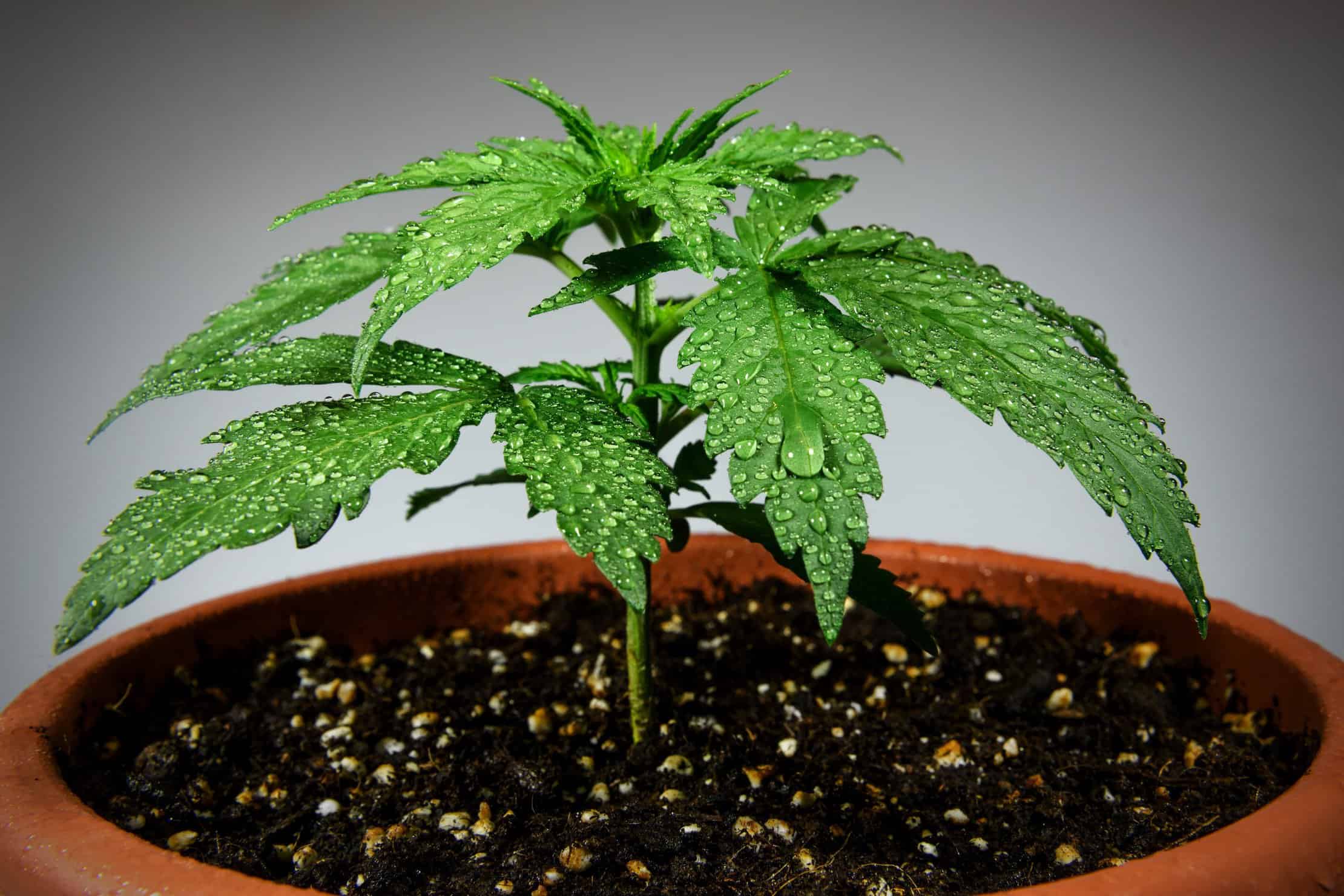
Always use soil that will promote root development and easy drainage. Soil mixes with perlite and small quantities of sand, compost, and other materials will encourage these two things.
Coco coir makes a good alternative to soil and works well for cannabis plants. Avoid dense soils and anything with clay as a component because it will prohibit drainage.
Proper Soil Aeration
The soil should be loose, not dense, so the roots can grow easily and spread out to absorb vital nutrients. Restricted roots or pots that are too small and cramp the roots are very undesirable for proper root development and healthy plants. To encourage aeration, you can poke several holes in the soil using chopsticks to get adequate depth.
Sound Nutrient Plan
Since the vast majority of soil additives and plant nutrients are mixed with water, you want to create a feeding schedule that alternates between nutrients/water and clear, fresh water. Alternating nutrients-fortified water with clear untreated water will provide your plants with a solid nutrient plan without overdoing it.
Telltale Signs of Overwatered Marijuana Plants
If your plants are receiving too much water, they will reveal some clear signs to you to confirm this fact. Heed these warnings your plants are giving you. If you act in a timely manner, you will probably be able to improve your cultivation practices and get your grow back on the right track.
Without proper action on your part, your grow will fail to thrive and eventually perish or, at best, result in an unsatisfactory harvest.
Drooping Leaves and Stems
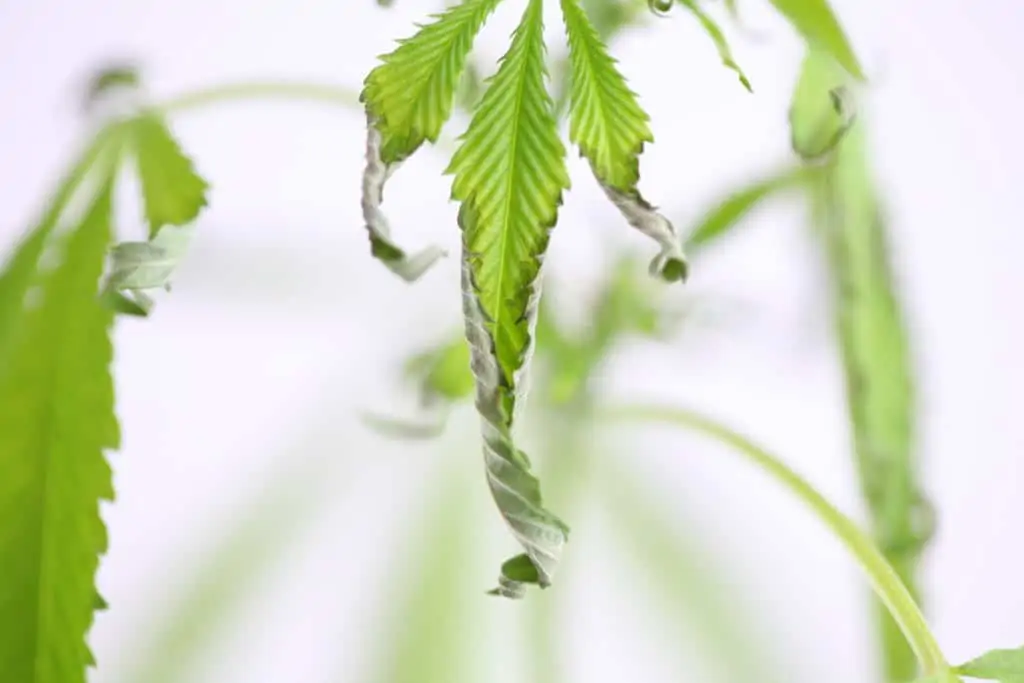
A healthy, unstressed cannabis plant does not have drooping leaves and stems. Drooping leaves and stems can be a sign that the plants have either been given too much or too little water. The leaves and stems on overwatered plants will curl as well as droop after a watering, while underwatered plants will merely droop.
Plants that have received too little water will have dry soil on the surface as well as 2 or 3 inches below the surface. If the plants have not been denied water for too long, they will perk up within a couple hours of receiving water. Drooping from overwatering is a more sinister affliction.
It’s important to check up on a recently watered plant in the minutes and hours after a watering. The drooping is not concentrated on the tips of the leaves or the leaves, in general. Instead, overwatering affects the entire plant. When there is too much water around the roots, the plant is unable to take in the oxygen it needs. When oxygen is unavailable, it can begin to curl, wilt, and eventually die.
Yellow Leaves
As well as drooping, overwatered plants will develop yellow leaves, also known as chlorosis—which is a classic sign of a plant that is unhealthy or overwatered. Some growers may mistake the yellowing with a nutrient deficiency. Without prompt attention to correct the overwatering or drainage problem, the plants will fail to thrive.
Yellow leaves usually occur after they begin drooping. The yellow color is a sign that the plants are not receiving adequate oxygen through the root system. The plants are literally drowning, and the roots need to dry out enough to start functioning properly again.
Diseases
Overwatering weed plants can weaken the plant’s supportive structure. In an overwatered plant, the base of the stem can feel soft and weak. Its roots can weaken over time and develop root diseases. Root diseases can include pythium, also known as root rot.
The potting soil can develop a foul-smelling odor. The abundance of moisture and decay is the perfect recipe for mildew, mold, and other fungal growth on the plant and soil. Overwatered plants can develop botrytis (grey mold) and powdery mildew.
Nutrient Deficiencies
Apart from feeding your plant too many nutrients, overwatering can cause nutrient deficiencies. Roots can take up less nutrients because they are flooded with water.
Water can reduce oxygen levels in the plant, which can slow down plant growth and water uptake by roots. Because roots are saturated with water, they can’t properly take in some nutrients like iron and phosphorus.
How to Tell if You've Underwatered or Overwatered Marijuana Plants
Many of the same signs of an overwatered marijuana plant are the signs of an underwatered one. Both can also destroy your plants. For this reason, novice growers may have trouble figuring out the root of their watering problem.
Underwatered plants usually grow at a slower rate and develop brown and dry leaf edges. Like overwatered plants, the plants may begin to drop leaves. Generally, lower leaves will go first and transition from yellow to brown until they dry completely.
The Solution
The solution to overwatered marijuana plants is simple and obvious: Stop providing so much water! This will mean watering less often or providing less water when you do water—or both.
Overwatering can be due to a grower watering the plants regularly or with a large volume of water or if the growing medium does not have the right level of aeration and/or has a bad drainage system.
Allow the plant’s soil to dry, and in extreme cases where proper drainage may also be a problem, transplant into a new, appropriate pot with fresh, moist—not wet—soil.
If you are prone to overwatering, smart (fabric) pots are an excellent alternative to conventional pots and almost eliminate the possibility of overwatering—although you may have to water more often since the soil in smart pots dries at a faster rate.
Allow the plant’s root system to dry within the pot for a few days before providing any water. Closely monitor the plants and provide the correct quantity of water once the plants begin growing in a normal, healthy manner and have a green, firm leaf structure.
Correct Cannabis Watering Procedure to Avoid Overwatered Marijuana Plants
Sometimes, young sprouts and seedling plants require more watering than usual. Since they begin to grow with a single root that soon starts to branch and fork, it’s imperative that the early, delicate root doesn’t dry out.
Since their root system isn’t fully developed, however, roots don’t need as much water as mature plants. Young seedlings are vulnerable to overly dry conditions, so be sure the soil is very moist but never sopping wet.
Misting the plants a couple of times a day can give them the water they need to develop roots.
Once plants are past the young seedling size and are a few inches in height, watering should occur every other day or whenever the pots appear dry. Because humidity levels vary by location, plants will dry quicker in some areas.
Some growers believe the best time to water a plant is at night, while others argue that daytime watering is the best. Watering at night, however, can leave the soil damp for long periods of time and lead to mold growth.
Watering your plants during the day can allow the plant to use its nutrients when they need it most for photosynthesis. Some outdoor growers water their plants in the morning due to the slower evaporation rate compared to a warm afternoon. Indoor growers usually water their plants when they turn on the lightsr.
Young cannabis plants may need more water compared to more mature plants, especially if they’re in an environment with high temperatures and low humidity. Young plants can be watered once or twice a day for thirsty plants.
“
There are over 300,000 jobs in the cannabis industry. CTU trained me for one of them!

Makes $24.50 @ THC +
Mature flowering plants can be watered once every 2-3 days. Ultimately, the best time to water your plants requires you to check the moisture level of your growing medium.
Water your plants when the soil surface appears dry. Check the surface dryness with your index finger. It should be a little moist an inch or so below the surface. Add water until you see it emerge from the drainage holes and collect on the ground or in the collection tray, if you use them.
No more than 25 percent of the water you provide should drain out. If too much water emerges or the soil surface stays wet for longer than two or three days, provide less water.
Watering techniques may vary between growing mediums. For instance, coco coir is so good at retaining water that it may only need to be watered once a day for young plants. As your plants start to grow, they may need twice as many waterings. Because coco holds on to water so well, using a large volume of water at once can drench the growing medium and reduce airflow.
Another way to check soil dryness—but can be difficult to do once the plants grow tall and develop large flowers—is to lift the pots to check weight. If the plants require water, the pots will feel much lighter than they do after watering. This method is a quick and easy way to determine if watering is necessary.
Once you settle into a proper water schedule and regimen, you will most likely never overwater again.
Marijuana Grow School
To learn how to grow marijuana and to get certified as a cannabis grower make sure to enroll at the undisputed leader in cannabis education and cannabis training. Grow better cannabis with online cannabis training from CTU. Increase your cannabis plant yield and save money on equipment. Learn from leading cannabis growers and save yourself time and precious resources.

Luis Cordova
Luis Cordova is a distinguished author, and renowned expert in cannabis cultivation, who possesses a Master's degree in Plant Biotechnology and Pharmaceutical Science. As a valued contributor to highly esteemed publications such as Cannabis Training University and Maximum Yield Magazine, Luis has emerged as a trusted source of guidance and knowledge in the cannabis industry. Having written thousands of informative articles, Luis is widely recognized for his comprehensive expertise on cultivating cannabis, both indoors and outdoors.


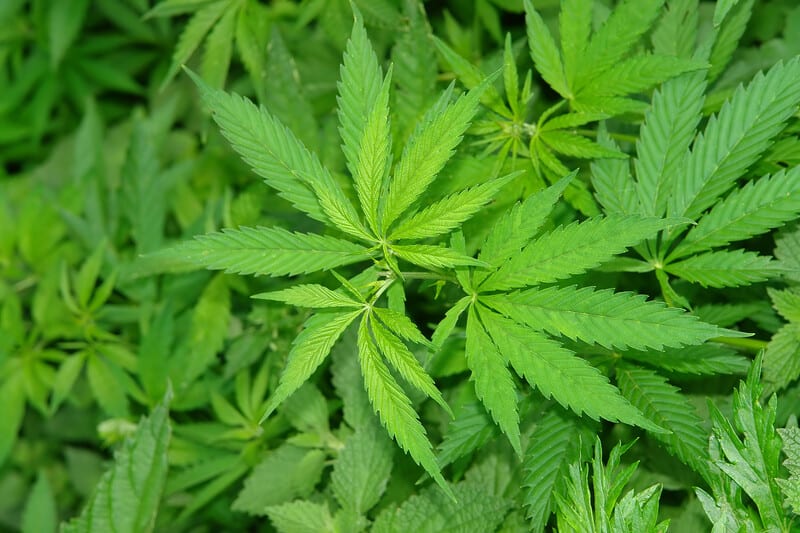



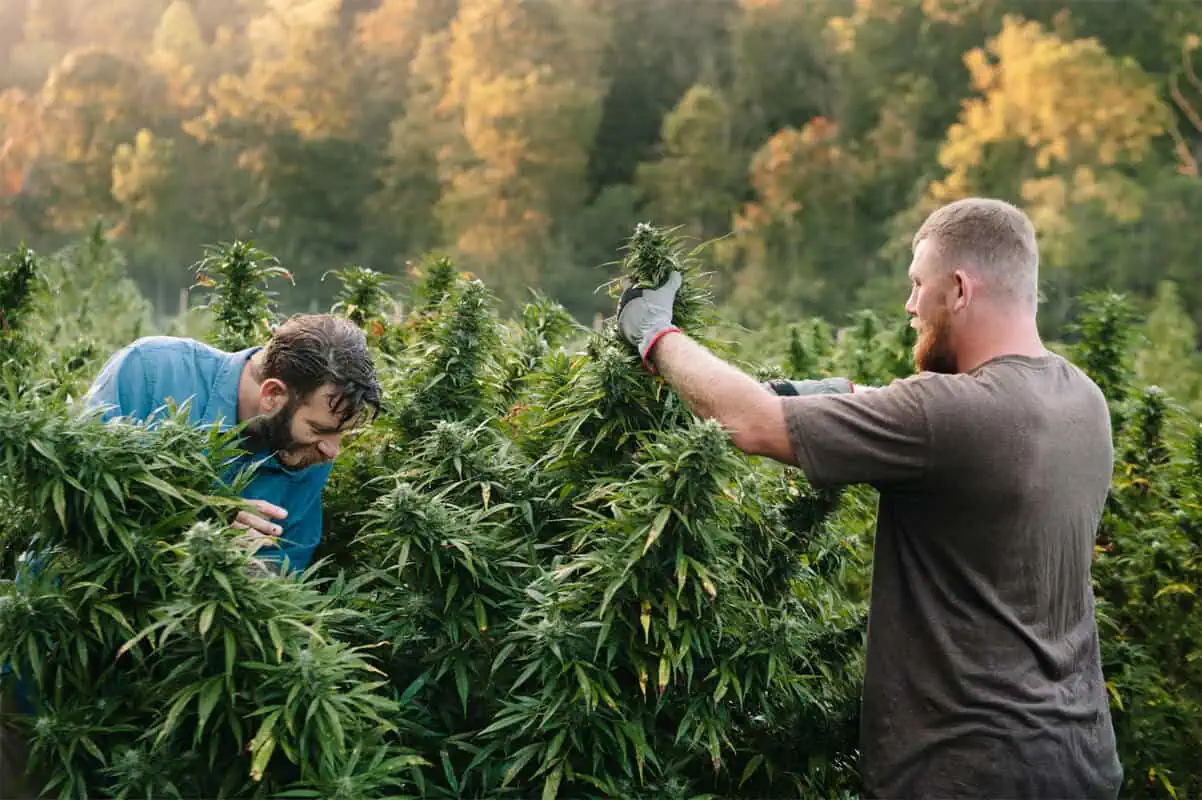
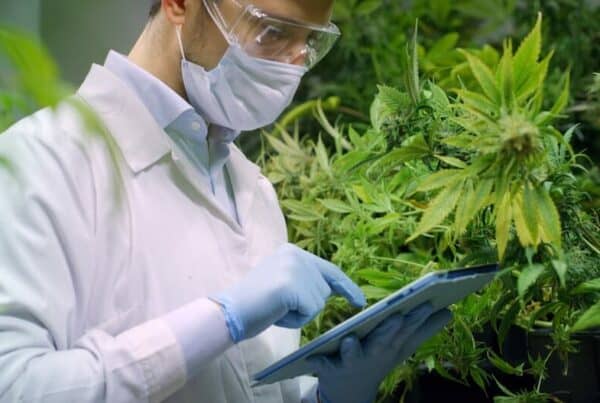

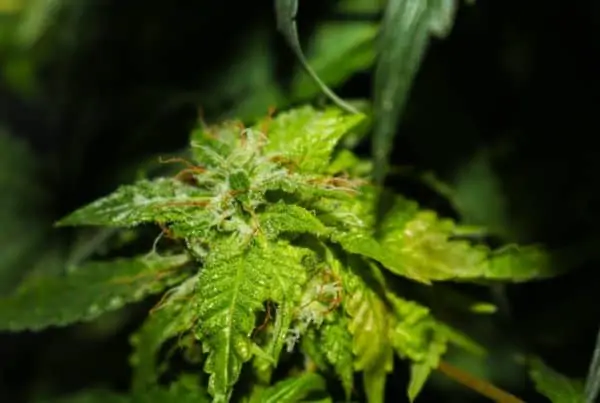


 Jeff was involved in an accident where he endured a traumatic brain injury. He had a week-long stay in ICU where brain surgeons
Jeff was involved in an accident where he endured a traumatic brain injury. He had a week-long stay in ICU where brain surgeons  100% risk free money back guarantee within 48 hours after purchase if student has not completed any of the courses or exams.
100% risk free money back guarantee within 48 hours after purchase if student has not completed any of the courses or exams.